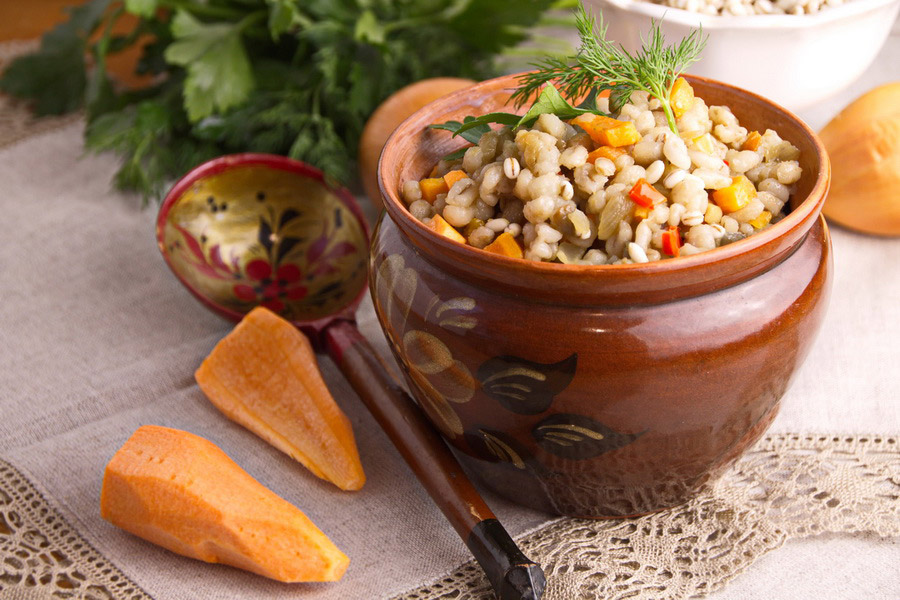
Porridge (kasha in Russian) is more than just a breakfast staple in Russia. Kasha has a long history, dating back to the pagan traditions of ancient Russia, since porridge and the grains it was made from were gifts from Mother Earth. There were several important traditions and rituals related to porridge and major life events. When a child was born, kasha was cooked with the meat of a rooster for a boy, and a hen for a girl. When a couple decided to get married, they would cook porridge together to ensure prosperity and plenty in their life together. Before battle, Russians would cook several cauldrons of porridge to feed all of the troops, and more kasha was cooked after victory and during reconciliation after a battle. A special type of porridge was made for Christmas Eve and for memorial services after a death.
Russians use a variety of grains for porridges:
- Farro: Farro is a small, semi-wild grain grown around Russia. The grains from farro are small and fine, but have been generally replaced by varieties of wheat that are easier to grow and process. Farro has recently made a comeback because it contains only a small amount of gluten. Farro can be boiled and turned into a delicious porridge.
- Barley: Peter the Great said that one of his favorite dishes was barley porridge, as it was one of the tastiest dishes. There are several types of barley porridge, depending on how the grain is processed and cooked. Basic barley porridge uses a crushed grain, while pearl porridge uses the whole grain (and thus has a white color, like a pearl). In Tver and Novgorod Oblasts, a thick porridge is made using the whole barley grain.
- Oats: Oats could be crushed or boiled whole for porridge, and were fairly easy to make. Today, oatmeal is relatively popular and widely available. Oats are also used for muesli, which isn’t a type of porridge, but is popular among those who are watching their health.
- Millet: Millet was used for drier as well as thicker porridges, and was cooked for holidays as well as for normal days.
- Rice: Rice arrived in Russia in the 18th century, and before it was accepted by the peasants, rice porridge was most common in the cities. Rice was first used as a filling for pierogies and pies, and then became an important ingredient for porridges. Nowadays, rice is used for kutia, a dish that is one of the most important dishes for Christmas Eve.
- Buckwheat: Buckwheat was one of the grains to show up later on Russian tables, but it quickly became popular. Today, it is impossible to imagine Russian food without buckwheat porridge. Drier porridges are made with the whole grain, while other types of porridge used smaller buckwheat grains.
Russian porridge could be made with either sweet or savory ingredients. Savory kashas include mushrooms, onions, and meat, while sweeter porridges have berries, honey, jam, raisins, nuts, butter and milk in them. This means that porridge can be eaten in the morning and throughout the day.

